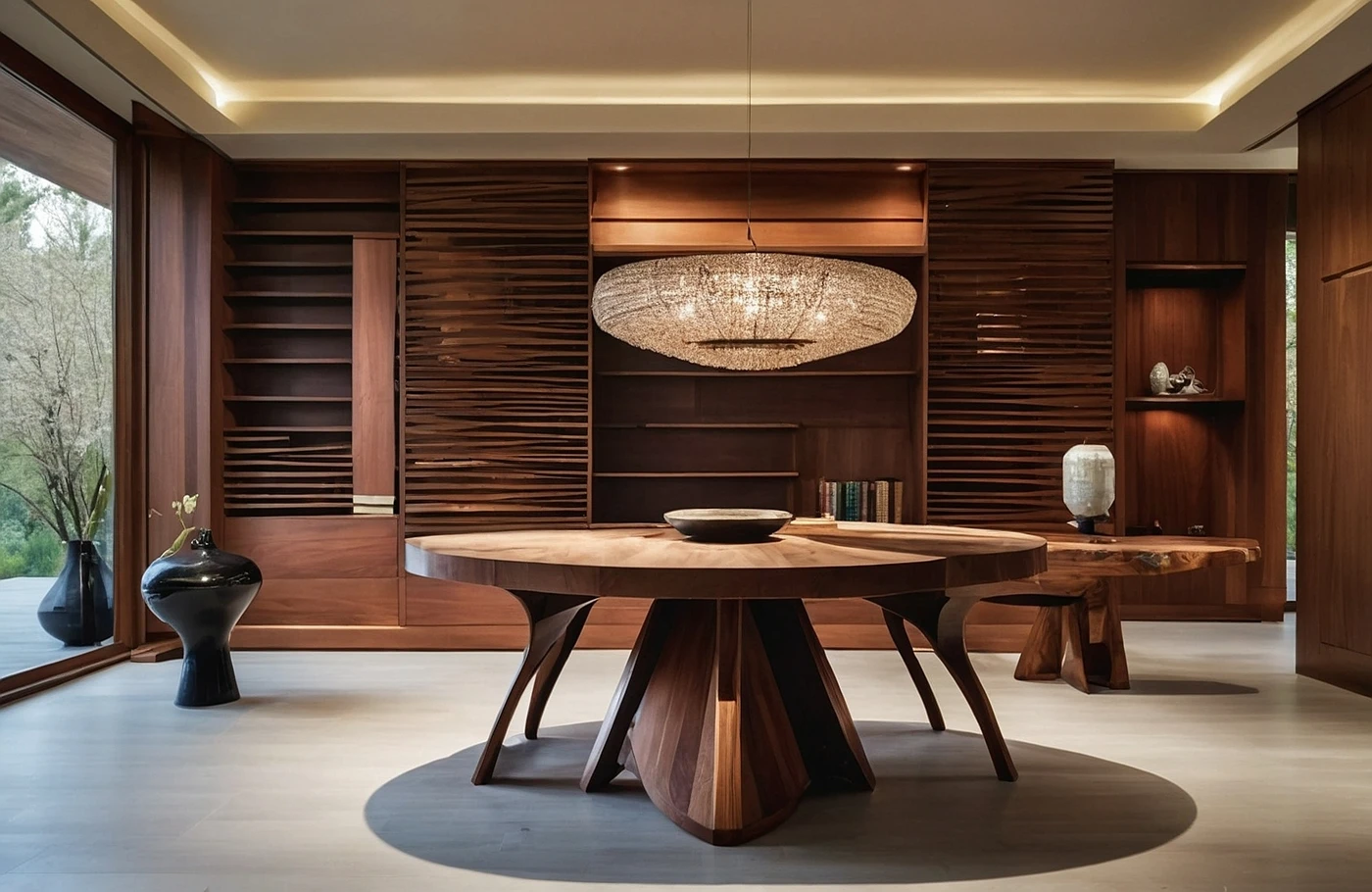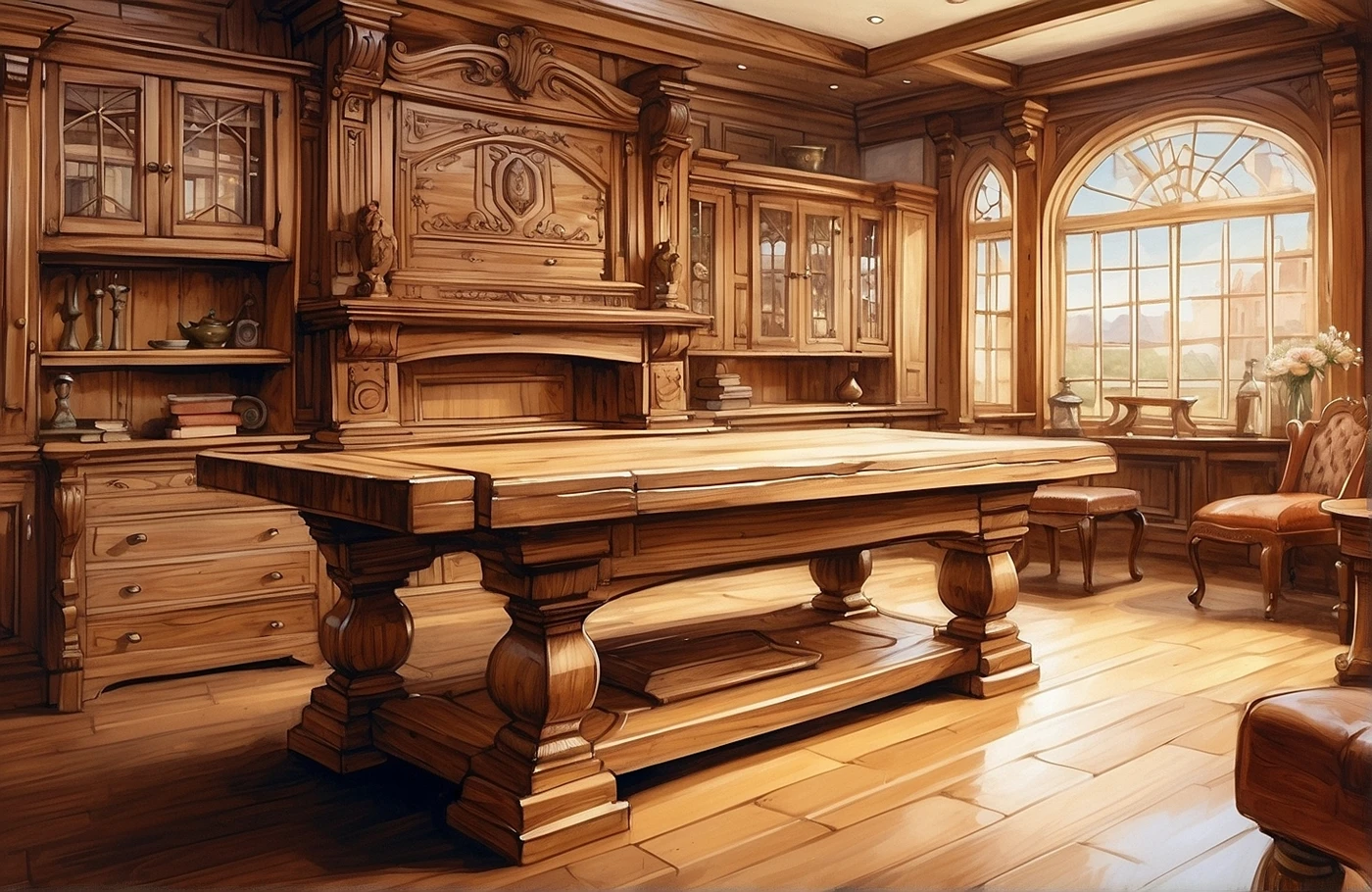How To White Wash Furniture

How to white wash furniture
White washing furniture is a popular technique that can give new life to old or outdated pieces. It involves applying a semi-transparent paint mixture to wood surfaces, allowing the grain to show through for a rustic, shabby chic look. If you're looking to refresh your furniture with a white wash finish, here are some tips and steps to help you achieve the desired result.
Choosing the Right Furniture Piece
Before you start the white washing process, it's essential to select the right furniture piece. Opt for pieces made of wood or wood veneer, as these materials work best for white washing. Avoid furniture with a glossy finish or laminate surfaces, as the paint may not adhere properly to these surfaces.
Preparing the Furniture Surface
To ensure a successful white wash application, prepare the furniture surface properly. Start by cleaning the piece thoroughly to remove any dirt, dust, or grime. If the furniture has a previous finish or paint, consider sanding it lightly to create a rough surface for better paint adhesion.
Choosing the White Wash Paint
When it comes to choosing the white wash paint, you have a few options to consider. You can create your own white wash mixture by diluting white latex paint with water, or you can purchase pre-made white wash pickling stain for a more straightforward approach. Whichever option you choose, make sure to test the mixture on a small, inconspicuous area of the furniture to ensure you achieve the desired look.
Applying the White Wash
Once you have prepared the furniture surface and chosen your white wash paint, it's time to apply the paint. Use a paintbrush or a clean cloth to apply the white wash mixture in the direction of the wood grain. Work in small sections, allowing the paint to penetrate the wood while still maintaining a semi-transparent finish. For a more distressed look, you can use sandpaper to lightly sand the edges and corners of the furniture piece after the white wash has dried.
Sealing the White Wash Finish
After the white wash paint has dried completely, consider sealing the finish to protect the wood and enhance its durability. You can choose to apply a clear sealer or topcoat to the furniture piece, depending on the level of protection and sheen you desire. Make sure to follow the manufacturer's instructions for the sealant application and drying times.
Enjoying Your White Washed Furniture
Once you have completed the white washing process and sealed the finish, allow the furniture piece to cure fully before using it. White washed furniture adds a charming and unique touch to any space, creating a cozy and inviting atmosphere. Whether you're updating an old piece or trying your hand at a DIY project, white washing furniture is a creative way to transform your home decor.
By following these steps and tips for white washing furniture, you can create beautiful and personalized pieces that reflect your style and aesthetic preferences. Embrace the versatility of white wash finishes and let your creativity shine through in your furniture makeovers.
Choosing the right materials for white washing
White washing furniture is a popular technique that can give a fresh and rustic look to your pieces. One of the key factors in achieving the perfect white wash finish is choosing the right materials to work with. Selecting the appropriate materials is crucial for the success of your project, as it can impact the final look and durability of the white wash. Here are some essential considerations when choosing materials for white washing furniture.
Types of Wood
The type of wood you are working with will greatly influence how the white wash turns out. Some woods, like pine and oak, are more porous and absorbent, allowing the white wash to penetrate deeply and create a more weathered look. On the other hand, hardwoods such as maple or cherry may require more preparation to ensure the white wash adheres properly. Consider the natural characteristics of the wood when selecting materials for your white washing project.
White Wash Pickling Stain
White wash pickling stain is a popular choice for achieving a whitewashed look on furniture. This type of stain is specifically formulated to create a semi-transparent finish that allows the wood grain to show through. It is important to note that white wash pickling stain is different from traditional paint or solid stain, as it is designed to enhance the natural beauty of the wood while still providing a white tint. When selecting a white wash pickling stain, opt for high-quality products to ensure a professional and long-lasting finish.
Paint Brushes and Rags
When white washing furniture, the tools you use can make a significant difference in the outcome. For applying the white wash pickling stain, choose high-quality paint brushes that are suitable for water-based finishes. A good quality brush will help you achieve a smooth and even application, resulting in a more uniform finish. Additionally, have clean lint-free rags on hand for wiping off excess stain and blending the white wash for a desired effect. Using the right tools will make the white washing process easier and more effective.
Sandpaper and Sealant
Before applying the white wash pickling stain, it is essential to prepare the surface of the furniture. Sandpaper of varying grits will help you smooth out imperfections, remove old finishes, and create a clean surface for the white wash to adhere to. After applying the white wash and allowing it to dry, consider using a sealant to protect the finish and add durability to the furniture. Polyurethane or furniture wax are popular options for sealing white washed furniture and preserving the look for years to come.
Choosing the right materials for white washing furniture is a critical step in achieving the desired aesthetic and durability of the finish. By considering the type of wood, selecting quality white wash pickling stain, using appropriate tools, and finishing with sealant, you can create beautifully whitewashed furniture that will enhance the style of your space. Experiment with different materials and techniques to find what works best for your project and enjoy the process of transforming your furniture with the timeless charm of white washing.
Techniques for achieving the perfect white washed finish
White washing furniture is a popular technique used to achieve a light, rustic finish that adds character and charm to any piece. While the process may seem intimidating at first, it is actually quite simple and can be done with just a few basic materials. By following the right techniques, you can easily achieve the perfect white washed finish for your furniture.
Choosing the Right Furniture Piece
Before you begin the white washing process, it is essential to select the right furniture piece. Pieces that work best for white washing are those with a lot of texture, such as wood with visible grains or furniture with intricate details. Avoid pieces with a smooth, glossy finish, as the white wash may not adhere properly.
Preparing the Furniture
To prepare the furniture for white washing, start by sanding down the surface lightly. This will help the white wash to adhere better and result in a more even finish. Once sanded, make sure to clean the piece thoroughly to remove any dust or debris that may affect the final result.
Choosing the Right White Wash
When it comes to white washing furniture, there are several options available. You can choose from water-based white washes, which provide a more subtle finish and allow some of the wood grain to show through, or oil-based white washes, which offer a more opaque finish. Consider the look you want to achieve when selecting the type of white wash to use.
Applying the White Wash
To apply the white wash, use a brush or a clean cloth to work the white wash into the furniture piece in small sections. Make sure to work in the direction of the wood grain for a more natural look. For a more distressed finish, you can use sandpaper to lightly sand the edges and corners of the piece after the white wash has dried.
Adding Depth and Dimension
To add depth and dimension to your white washed furniture, consider using a second coat of white wash in some areas. This will create a more layered look and enhance the overall finish of the piece. Be sure to let each coat dry completely before applying the next one.
Sealing the Finish
Once you have achieved the desired look with your white washed furniture, it is essential to seal the finish to protect it from wear and tear. You can use a clear furniture wax or polyurethane sealer to seal the piece and ensure that your white wash lasts for years to come.
White washing furniture is a fantastic way to breathe new life into old pieces and create a beautiful, shabby chic look. By following these techniques for achieving the perfect white washed finish, you can transform your furniture and add a touch of rustic elegance to your home. Experiment with different white washes and techniques to find the perfect style that suits your taste and enjoy the process of creating stunning white washed furniture pieces.
Maintenance and care tips for white washed furniture
Maintaining and Caring for White Washed Furniture
White washed furniture is a timeless and elegant addition to any home decor. Whether you have a white washed dresser, table, or chairs, proper maintenance is key to preserving their beauty and ensuring longevity. By following the right care tips, you can keep your white washed furniture looking pristine for years to come.
Cleaning White Washed Furniture
To clean white washed furniture, start by dusting it regularly with a soft cloth or duster to prevent dirt and grime buildup. For deeper cleaning, mix a mild detergent with warm water and gently wipe down the furniture using a soft cloth. Avoid using harsh chemicals or abrasive cleaners, as they can damage the white washed finish. Always remember to dry the furniture thoroughly after cleaning to prevent water damage.
Avoiding Sunlight Exposure
Exposure to direct sunlight can cause the white wash finish on furniture to fade over time. To prevent this, place white washed furniture away from windows or use curtains and blinds to limit exposure to sunlight. Additionally, consider rotating the position of your furniture occasionally to ensure that it fades evenly if it cannot be avoided.
Handling Spills Promptly
Accidents happen, and spills are inevitable. When a spill occurs on white washed furniture, it is essential to clean it up immediately to prevent stains from setting in. Blot the spill with a clean cloth or paper towel, and then gently wipe the area with a damp cloth. Avoid rubbing the spill, as it can spread and penetrate the finish.
Using Furniture Wax
Applying furniture wax is a great way to protect and enhance the appearance of white washed furniture. Choose a high-quality furniture wax and apply it according to the manufacturer's instructions. Waxing not only adds a protective layer to the furniture but also helps restore its luster and shine.
Touching Up Scratches
White washed furniture may develop scratches over time, detracting from its overall appeal. To touch up minor scratches, use a touch-up pen or white wood stain that matches the original finish. Apply the touch-up product carefully to the scratched area, following the grain of the wood, and allow it to dry completely before using the furniture again.
Preventing Water Damage
To prevent water damage to white washed furniture, use coasters or placemats under glasses, mugs, and vases to protect the surface from moisture. In case of accidental water spills, quickly dry the affected area to prevent the water from seeping into the wood and causing damage to the finish.
White washed furniture adds a touch of charm and sophistication to any space. By following these maintenance and care tips, you can ensure that your white washed furniture remains in excellent condition for years to come. Regular cleaning, protection from sunlight, immediate handling of spills, use of furniture wax, addressing scratches, and preventing water damage are essential practices to preserve the beauty and longevity of your white washed furniture.
White washing vs. painting: Pros and cons
White washing furniture and painting are two popular methods to update and transform the look of furniture pieces. Each technique has its own set of pros and cons, making it essential to understand the differences between them before deciding which option is best suited for your furniture. Let's delve into the key factors to consider when choosing between white washing and painting.
Advantages of White Washing Furniture
White washing furniture involves applying a thinned paint mixture to wood surfaces, allowing the natural grain to show through. One of the main advantages of white washing is that it creates a soft, muted finish that adds a rustic or vintage charm to the furniture. This technique is ideal for those looking to achieve a weathered or shabby chic aesthetic.
Another benefit of white washing is that it is relatively easy to apply and requires minimal preparation compared to traditional painting. Since white washing allows some of the wood to peek through, any imperfections or knots in the wood can add character to the piece rather than being fully concealed.
Drawbacks of White Washing Furniture
While white washing offers a unique and charming finish, it may not provide as much coverage or protection as traditional paint. White washing is more translucent, which means it may not fully mask the underlying color or imperfections of the furniture. Additionally, white washing may require multiple coats to achieve the desired level of opacity.
Over time, white washing may also wear off more quickly than paint, especially on high-traffic furniture pieces. This means that furniture that has been white washed may require more frequent touch-ups or reapplications to maintain its appearance.
Advantages of Painting Furniture
Painting furniture offers a broader range of color options and finishes compared to white washing. Whether you're looking for a bold and vibrant look or a sleek and modern finish, paint provides endless possibilities for customization. Additionally, paint offers more durability and protection against wear and tear, making it suitable for furniture that sees heavy use.
Another advantage of painting furniture is that it provides better coverage, allowing you to completely transform the look of the piece. Paint can easily cover up any existing imperfections or discolorations on the furniture, giving you a smooth and uniform finish.
Drawbacks of Painting Furniture
While painting furniture provides excellent coverage and durability, it requires more preparation and effort compared to white washing. Prepping the furniture surface, such as sanding and priming, is crucial to ensure that the paint adheres properly and lasts long. Additionally, painting may involve more time and precision to achieve a flawless finish, especially when using multiple coats or intricate techniques like distressing or antiquing.
The choice between white washing and painting furniture ultimately depends on your desired aesthetic, the level of durability you require, and the amount of effort you are willing to invest in the project. Whether you opt for the soft and rustic charm of white washing or the bold and customizable nature of painting, both techniques offer unique ways to revamp your furniture and breathe new life into your living space.
Conclusion
In light of the various aspects discussed about white washing furniture, it is evident that this technique offers a unique and charming way to breathe new life into old or outdated pieces. By learning how to white wash furniture properly, you can transform your home decor with a trendy and customized touch. Selecting the right materials, utilizing the appropriate techniques, and following maintenance tips are crucial steps in achieving the perfect white washed finish.
When considering materials for white washing, it is essential to choose options that suit your desired aesthetic and the type of furniture you are working with. Whether using paint, stain, or a specialized white wash pickling solution, ensuring the materials are of high quality will result in a more durable and visually appealing finish.
Exploring the various techniques for white washing, such as dry brushing, rag rolling, or using watered-down paint, allows for creativity and personalization in your furniture projects. Experimenting with different methods will help you achieve the desired level of coverage and texture, imparting a rustic, beachy, or shabby chic look to your furniture pieces.
Maintenance and care are vital aspects to consider once your furniture has been white washed. To preserve the finish and prolong the lifespan of your pieces, it is recommended to clean them regularly with a gentle cleanser and avoid harsh chemicals that may damage or discolor the white wash. Additionally, periodic touch-ups and reapplications of the white wash will help maintain the furniture's appearance over time.
Comparing white washing to traditional painting reveals distinct pros and cons to each approach. While white washing offers a softer, more translucent finish that allows the wood's natural grain to show through, painting provides a solid, opaque color coverage. White washing is ideal for achieving a weathered or vintage look, whereas painting offers more color options and can conceal imperfections in the wood.
Mastering the art of white washing furniture involves a blend of creativity, technique, and proper maintenance. By understanding the process of white washing, selecting suitable materials, learning various techniques, and practicing good maintenance habits, you can revamp your furniture pieces with a beautiful and timeless finish. Whether you prefer the charm of white washed furniture or the classic appeal of painted pieces, each method offers unique benefits to enhance your home decor and reflect your personal style.



